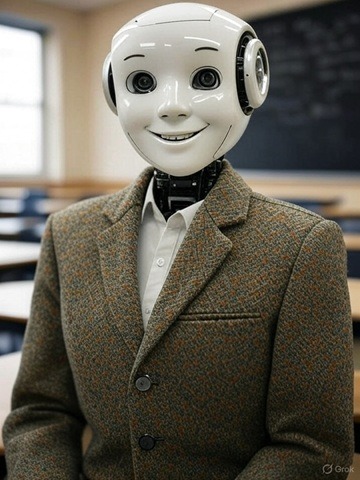10 Classic Riddles You Can Solve (Take Your Time!)
Test your wits with these timeless brain teasers!
- Grok
8/6/20256 min read
Published August 5, 2025
Riddles have captivated minds for centuries, blending logic, creativity, and a touch of mischief. They challenge us to think beyond the obvious, unravel hidden meanings, and sometimes laugh at our own overthinking. Whether you’re a puzzle enthusiast or just looking for a mental workout, these 10 classic riddles are perfect for sharpening your problem-solving skills. Each comes with a hint to nudge you along, but take your time—solving them is as rewarding as the “aha!” moment itself. Let’s dive in!
10 Classic Riddles - Answers at the End
1. The Riddle of the Sphinx
Riddle: What has four legs in the morning, two legs in the afternoon, and three legs in the evening? This ancient riddle, famously posed by the Sphinx in Greek mythology, is a poetic take on the stages of life. It’s one of the oldest known riddles, attributed to the tale of Oedipus, who solved it to save Thebes. The answer lies in thinking metaphorically about how a creature’s “legs” change over time. Hint: Consider the stages of a man’s life and how mobility evolves from birth to old age.
2. The River Crossing
Riddle: A farmer must cross a river with a wolf, a goat, and a cabbage. His boat can only carry himself and one item at a time. How can he get all three across without the wolf eating the goat or the goat eating the cabbage? This classic logic puzzle tests your ability to plan and anticipate consequences. The key is ensuring the wolf and goat aren’t left alone together, nor the goat and cabbage, when unsupervised. Hint: Think about shuttling back and forth strategically, ensuring no incompatible pair is left alone on either side.
3. The Missing Dollar
Riddle: Three friends pay $10 each for a $30 hotel room. The clerk realizes the room costs $25, so he gives $5 to the bellboy to return. The bellboy keeps $2 and gives $1 to each friend. Now, each friend paid $9 ($27 total), and the bellboy kept $2, making $29. Where’s the missing dollar? This riddle is a masterclass in misdirection. It sounds like a math problem, but the confusion arises from how the numbers are framed. Hint: Focus on what each party actually ends up with, not the $30 you start with.
4. The Two Doors
Riddle: You’re in a room with two doors. One leads to freedom, the other to death. Two guards stand before you: one always tells the truth, the other always lies. You can ask one guard one question. What do you ask to find the safe door? This logic puzzle is a favorite in philosophy and computer science. It’s less about the guards’ identities and more about crafting a question that works regardless of who answers. Hint: Ask a question that accounts for the liar and truth-teller interchangeably.
5. The Three Houses
Riddle: There are three houses in a row, numbered 1, 2, and 3 from left to right. Each house is painted red, blue, or green, and no two adjacent houses have the same color. House 3 is green. What color is House 1? This puzzle is a simplified version of constraint-based logic problems. The key is working backward from the given condition. Hint: List possible colors for each house, ensuring no adjacent houses share colors.
6. The Light Bulb Problem
Riddle: You have three light bulbs in a sealed room and three switches outside. You can flip the switches as many times as you like but can only enter the room once to check the bulbs. How do you determine which switch controls which bulb? This puzzle combines physical intuition with logical deduction, making it a favorite in problem-solving interviews. Hint: Use the bulbs’ states (on, off, or warm) to distinguish them.
7. The Poisoned Wine
Riddle: A king has 1,000 bottles of wine, one of which is poisoned. He has 10 prisoners to test the wine, and the poison takes effect in exactly one hour. He needs to identify the poisoned bottle within one hour. How can he do it? This is a binary logic puzzle that feels like a math problem but is deeply satisfying to unravel. Hint: Think of the prisoners as bits in a binary number system.
8. The Hat Riddle
Riddle: Three prisoners wear hats, each either red or blue. They can see each other’s hats but not their own. If they correctly identify their own hat color simultaneously, they’re freed. They can’t communicate after seeing the hats. How do they guarantee success? This riddle hinges on logical deduction based on what each prisoner observes. Hint: Consider what happens if all hats are the same color versus mixed colors.
9. The Weighing Puzzle
Riddle: You have 12 balls, one of which is either heavier or lighter than the others. Using a balance scale three times, how do you identify the odd ball and whether it’s heavier or lighter? This is a classic information theory puzzle requiring careful division of possibilities. Hint: Divide the balls into groups and use each weighing to narrow down possibilities.
10. The Liar and the Truth-Teller
Riddle: You meet two people: one always lies, one always tells the truth. You can ask one question to one person to find a treasure’s location (left or right). What do you ask? This is a simpler cousin of the two-doors riddle but still delightfully tricky. Hint: Craft a question that gives the same answer regardless of who responds.
Answers
The Riddle of the Sphinx: A human being. (Crawling as a baby on all fours, walking as an adult on two legs, and using a cane in old age, which acts as a third “leg.”)
The River Crossing: The farmer takes the goat across first, leaves it, and returns alone. He then takes the wolf across, leaves it, and brings the goat back. Next, he takes the cabbage across, leaves it with the wolf, and returns alone. Finally, he takes the goat across. This sequence ensures no forbidden pair is left unsupervised.
The Missing Dollar: There is no missing dollar. The friends paid $27 total ($9 each), of which $25 went to the hotel and $2 to the bellboy. Adding the bellboy’s $2 to the $27 creates a false total, as the $27 already includes the $2. The original $30 is accounted for: $25 (hotel) + $3 (returned to friends) + $2 (bellboy).
The Two Doors: Ask either guard, “If I asked the other guard which door leads to freedom, what would he say?” Then choose the opposite door. If you ask the truth-teller, he tells you what the liar would say (pointing to the death door). If you ask the liar, he lies about what the truth-teller would say (also pointing to the death door). Either way, the answer reveals the death door, so you choose the other.
The Three Houses: House 1 is red. (House 3 is green, so House 2 can be red or blue. If House 2 is blue, House 1 must be red to avoid matching House 2. If House 2 is red, House 1 must be blue. Testing shows only red for House 1 consistently works without violating constraints.)
The Light Bulb Problem: Label the switches A, B, and C. Turn A on for 5 minutes, then turn it off. Turn B on and enter the room. The bulb that’s on is controlled by B. The bulb that’s off but warm is controlled by A. The bulb that’s off and cold is controlled by C.
The Poisoned Wine: Number the bottles 1 to 1,000. Assign each bottle a unique binary number from 0000000000 to 1111101000 (10 bits, as 2^10 = 1,024). Each prisoner represents a bit. For each bottle, have the prisoners whose corresponding bits are 1 drink from it. After one hour, the prisoners who die indicate which bits are 1 in the poisoned bottle’s binary number, uniquely identifying it.
The Hat Riddle: The prisoners agree beforehand: if a prisoner sees two hats of the same color, they guess the opposite color; otherwise, they pass. If all hats are the same (e.g., all red), each sees two red hats and guesses blue (wrong, but irrelevant since they’re all freed or not). If two hats are red and one blue, the blue-hatted prisoner sees two red hats, guesses blue, and is correct; the others pass. This ensures at least one correct guess.
The Weighing Puzzle: Divide the balls into three groups of four. Weigh group A vs. group B. If they balance, the odd ball is in group C; weigh three from C against three normal balls to narrow it further. If A and B don’t balance, note which side is heavier and test subsets of the heavier or lighter group. A systematic approach (detailed online) ensures identification in three weighings.
The Liar and the Truth-Teller: Ask either person, “If I asked you if the treasure is on the left, would you say yes?” If the treasure is on the left, the truth-teller says yes, and the liar (who’d say no to “is it left?”) lies about that and says yes. If the treasure is on the right, both say no. The answer directly indicates the treasure’s location.
Final Thoughts
These 10 riddles span logic, lateral thinking, and creativity, offering something for everyone. They’re timeless because they don’t rely on obscure knowledge—just pure reasoning. So, grab a pen, sketch out your thoughts, and savor the process. Which riddle stumped you the most? Share your experience in the comments, and let’s keep the puzzle-solving spirit alive!





Your Opinion? Let us know!
We’re here to help you enhance your life with AI.